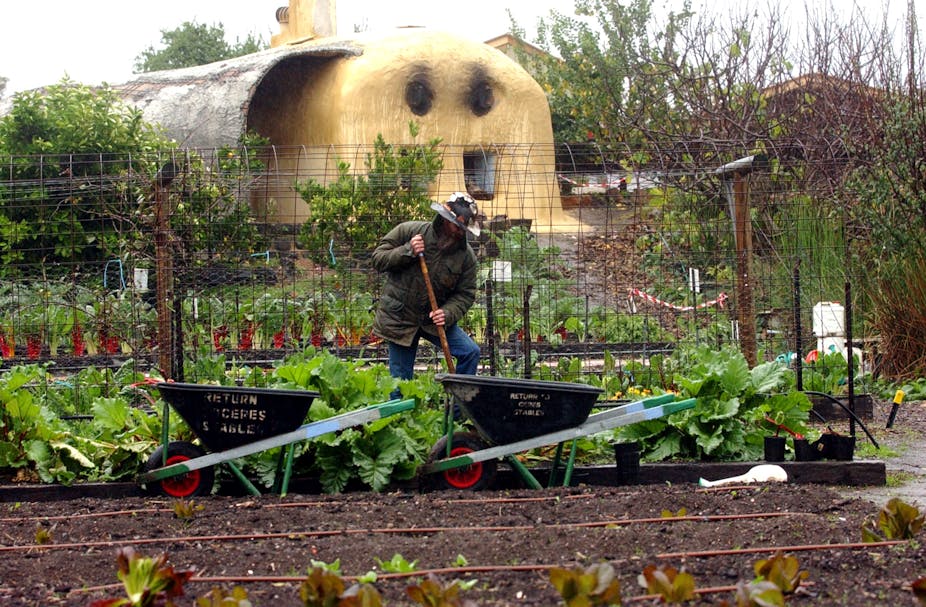Food security has typically been framed as an issue of global concern, concentrated within developing countries. The UN Food and Agriculture Organisation defines food security in terms of the availability of food sufficient to meet the needs of all people at all times, and while this conception acknowledges that people must have the wherewithal to meet their own needs, it can lead to a preoccupation with the gross volume of food produced, at the expense of questions of distribution and adequacy.
Alternative notions of food sovereignty address some of these conceptual shortcomings and importantly also reveal more clearly the problems of food accessibility and adequacy we face in Australia. And as more than 90% of us now live in cities we recognise that food security is as much an urban problem as it is one of rural food production.

This shift from relatively simple to more nuanced conceptions of food security helps to explain why in a recent survey conducted by the ANU a small but significant number of Australians said they were worried their food would run out in the coming week and a smaller group said that occasionally their food ran out and when it did, they had no money to buy any more. This survey also revealed that just over 3% of those surveyed had been forced to rely on some form of emergency food assistance in the last year and that just over 30% grow food at home in order to save money.
Food security is affected by various factors, including peak oil; the availability of fertilisers; population growth; and climate change. Rising fuel prices associated with peak oil are increasing the costs of large-scale agricultural production; also rising are the costs of transporting food within and between countries and the price of fertilisers essential to modern industrial agriculture. As the global population rises so too does demand for food and as the people of many countries become wealthier they typically develop a taste for different types of food, many of which require increasing amounts of energy to produce, process, and transport to their point of consumption - which is increasingly in cities. These cost pressures are likely to be exacerbated by climate change, as the food-growing capacity of some regions fluctuates in the face of global warming, increasing drought, and more periods of intense rainfall. For example, rice production in the Riverina plummeted in 2009 while the whole of the Australian grain belt has suffered from the severe drought of the last decade. The localised impacts of extreme weather and climate change have had dramatic impacts on the food security of some cities, with the empty supermarket shelves of Brisbane and steep price rises for many fruits and vegetables following the floods of early 2011.

What can we do to make our cities more food secure and to ensure that those most exposed to food insecurity in cities are better able to cope in the future? A significant opportunity exists to support the re-localisation of food production, processing, and consumption. While cities historically grew as places where local food surpluses were traded, urban food supply lines have become increasingly long, complex, and vulnerable to disruption by a number of factors, including climate change but also by natural disasters and by wars and other conflicts. By growing more of our food within our cities and in their immediate peri-urban hinterlands we can become less dependent on these vulnerable supply lines.
Urban agriculture takes many forms, from growing herbs on our balconies and veggies in our backyards through to small-scale but high-yielding commercial production on the urban fringe. It includes keeping animals such as chooks, goats, or bees as well as small-scale food processing and the recycling of food waste. Finally urban agriculture can involve new ways of and places for selling food, from farmers and producers-markets to food-swap meetings. It’s unlikely that we will see a major shift in the way that we buy most of our food, but these new local alternatives are becoming increasingly popular with an ever wider group of people, helping to build alternative supply lines and strengthening urban resilience.
There are of course obstacles to the expansion of urban agriculture. An ever-growing web of regulations can form serious barriers to entry and make even the apparently straightforward task of selling surplus eggs or jam a complex and costly exercise. While community gardens are proving increasingly popular, our research found cases where proposals were met with concerted opposition and sometimes with serious abuse from neighbours concerned that a community garden might reduce their property values (when if anything the opposite is likely to be the case).

But the most significant impediment lies in the competition for urban land, both within and on the fringes of our cities where pressure to build more houses is intense. The suburban backyard that once allowed Australian families to provide a significant proportion of their own fresh fruit and vegetables is shrinking rapidly and as we live at higher densities within cities the space to grow food is diminishing.
So, as part of the broader project of making our cities more resilient in the face of climate change we need to take up the challenge of improving urban food security. Urban agriculture in all its forms can play an important role in this, but it will require new thinking and changes in how we choose to feed ourselves. But we have been here before and faced with a new set of threats, necessity may once again become the mother of invention.
Comments welcome below.

